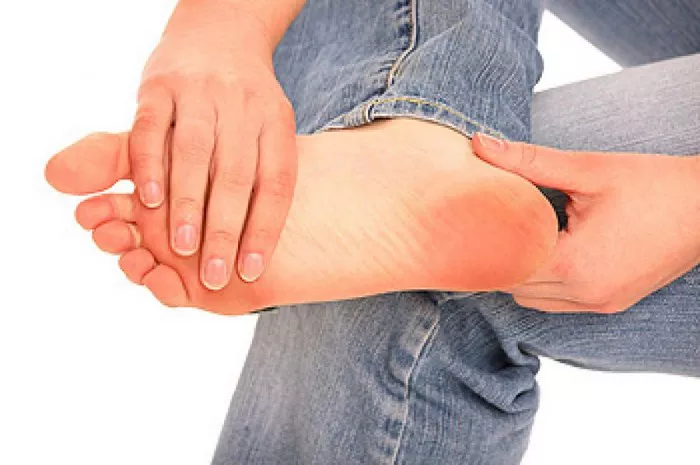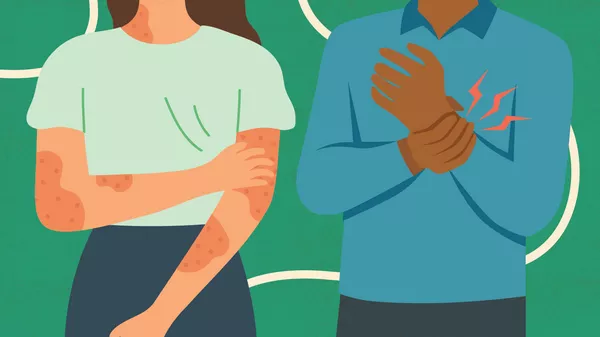Psoriatic arthritis (PsA) is a chronic autoimmune condition that affects millions of people worldwide. It typically develops in individuals with psoriasis, a skin condition characterized by red, scaly patches. PsA can cause joint pain, stiffness, and swelling, often leading to irreversible joint damage if left untreated. Early detection and intervention are crucial for managing the symptoms and preventing long-term complications. In this article, we delve into the various signs and symptoms of psoriatic arthritis, empowering individuals to recognize the condition and seek timely medical care.
Understanding Psoriatic Arthritis:
Psoriatic arthritis is a multifaceted disease that manifests differently from person to person. While its exact cause remains unclear, genetic predisposition and environmental factors are believed to play significant roles in its development. The hallmark feature of PsA is inflammation, which primarily targets the joints but can also affect other tissues and organs in the body. This inflammation triggers a cascade of symptoms that vary in severity and duration.
Common Signs and Symptoms:
1. Joint Pain and Swelling: One of the most prevalent symptoms of psoriatic arthritis is joint pain, often accompanied by swelling and tenderness. These symptoms typically affect the large joints, such as the knees, elbows, and ankles, but can also involve the small joints of the hands and feet. The pain may worsen with movement or after periods of inactivity, such as upon waking in the morning.
2. Morning Stiffness: Individuals with PsA often experience stiffness in their joints, particularly upon waking in the morning or after prolonged periods of rest. This stiffness can persist for hours and may gradually improve with movement throughout the day. However, severe or prolonged morning stiffness may indicate active inflammation and should prompt further evaluation by a healthcare professional.
3. Psoriasis Flare-ups: Psoriatic arthritis is closely associated with psoriasis, and many individuals with PsA also experience flare-ups of their skin symptoms. These flare-ups may involve the development or worsening of red, scaly patches on the skin, which can be accompanied by itching, burning, or discomfort. Monitoring changes in psoriasis symptoms can help identify potential flare-ups of PsA.
4. Nail Changes: Psoriatic arthritis can also affect the nails, leading to various changes in their appearance and texture. Nail involvement in PsA may include pitting (small dents or punctures), ridges, discoloration, thickening, or separation from the nail bed. These changes are often indicative of underlying inflammation and can occur alongside joint symptoms.
5. Fatigue: Chronic fatigue is a common complaint among individuals with psoriatic arthritis and can significantly impact daily functioning and quality of life. Fatigue in PsA may result from a combination of factors, including inflammation, pain, poor sleep quality, and the emotional toll of managing a chronic condition. Addressing fatigue requires a holistic approach that addresses both physical and psychological aspects of the disease.
6. Tenderness and Swelling of Tendons: In addition to joint inflammation, psoriatic arthritis can cause inflammation of the tendons and ligaments surrounding the joints, a condition known as enthesitis. Enthesitis commonly affects areas such as the Achilles tendon, plantar fascia (bottom of the foot), and the points where tendons attach to bones. Symptoms may include tenderness, swelling, and pain with movement or pressure.
7. Eye Inflammation: Some individuals with psoriatic arthritis may develop inflammation in the eyes, a condition called uveitis or iritis. Eye inflammation can cause symptoms such as redness, pain, sensitivity to light, blurred vision, and excessive tearing. Prompt evaluation and treatment by an eye care professional are essential to prevent complications and preserve vision.
8. Symmetrical Joint Involvement: Unlike other types of arthritis, such as rheumatoid arthritis, psoriatic arthritis often exhibits asymmetrical joint involvement, meaning that it does not affect the same joints on both sides of the body simultaneously. However, in some cases, PsA may also present with symmetrical joint symptoms, resembling other inflammatory arthritic conditions.
9. Back Pain and Spinal Involvement: Psoriatic arthritis can affect the spine, leading to a condition known as spondylitis. Spondylitis causes inflammation and stiffness in the vertebrae of the spine, resulting in back pain and reduced mobility. Individuals with spondylitis may experience pain and stiffness in the lower back, buttocks, and hips, which may worsen with rest and improve with movement.
10. Systemic Symptoms: In addition to joint and skin symptoms, psoriatic arthritis can cause systemic manifestations that affect various organs and systems in the body. These systemic symptoms may include fever, weight loss, generalized fatigue, and a feeling of malaise. While less common than joint and skin symptoms, systemic manifestations of PsA can significantly impact overall health and require thorough evaluation.
Seeking Medical Evaluation:
If you experience any of the signs or symptoms mentioned above, it is essential to consult a healthcare professional for a comprehensive evaluation and diagnosis. While there is no cure for psoriatic arthritis, various treatment options are available to manage symptoms, reduce inflammation, and slow disease progression. Early intervention is key to preventing joint damage and preserving joint function in the long term.
During your medical evaluation, your healthcare provider will likely perform a thorough physical examination, review your medical history, and may order diagnostic tests such as blood tests, imaging studies, or joint fluid analysis to confirm the diagnosis of psoriatic arthritis and assess disease activity.
Conclusion:
Psoriatic arthritis is a complex and potentially debilitating condition that requires early recognition and intervention for optimal management. By familiarizing yourself with the signs and symptoms of PsA, you can take proactive steps to seek medical care and initiate appropriate treatment. Remember that PsA affects individuals differently, and symptoms may vary in severity and presentation. If you suspect that you may have psoriatic arthritis, don’t hesitate to reach out to a healthcare professional for guidance and support. With timely intervention and comprehensive care, individuals with PsA can lead fulfilling and active lives despite the challenges posed by this chronic condition.
Related Topics:
Best Homeopathic Medicine for Psoriasis
























